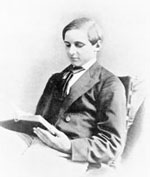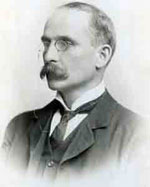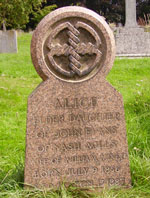|
|||
 Arthur Evans |
Arthur Evans was the eldest son of John Evans and Harriet Dickinson. Arthur married Margaret Freeman in 1878, but they had no children. Arthur became Keeper of the Ashmolean Museum in 1884 and is best known for his excavations at Knossos. Lewis Evans, born in 1853, was John and Harriet's second son, named after his great- grandfather. His first wife was Beryl Ward, daughter of the vicar of Apsley; however she died in 1886. He then married Eva Bradford in 1889 and they had five children. Lewis Evans succeeded his father at the paper mill; he also co-founded the History of Science Museum in Oxford. The Apsley Paper Trail recently acquired from John Dickinson's Stationery Ltd an oil painting of Lewis, reproduced in The Endless Web (Joan Evans 1955, Fig 30). Philip Norman Evans (always called Norman) was the third son of Harriet and John, born in 1854. Norman attended the same prep school, Callipers in Chipperfield, as his brother, Arthur had done. Norman's interests were scientific; he was against anything to do with antiquity, was energetic and the most irresponsible member of the family. Francis Evans's diaries write about 'Norman's youthful escapades'. One of these was to mesmerize the kitchen-maid, sending her into a trance but not knowing how to wake her up again! 'Norman came home for the Easter holidays (in 1869) full of his electro-biological powers'. 'The kitchen maid was very odd and stayed in bed'. Norman went on to Harrow and following this, not knowing what he wanted to do, his father put him into the office of the mills. In 1883 he and his father quarrelled and Norman departed for America. Whilst there he attended a lecture on chemistry which inspired him. After a hunting trip in the Rockies, he went to Bonn University to study chemistry further. Norman married secretly in Bonn and he and his wife, Ada, came home to England in 1889. He went into partnership with another German chemist and John Evans arranged for them to be the consulting chemists for Dickinsons. Norman Evans died in December 1893. There are no photographs of Norman in the John Evans archive. |
||
 Lewis Evans |
|||
 Alice's grave at St. Lawrence's church in Abbots Langley, Hertfordshire |
Alice Evans was John and Harriet's first daughter, born in 1856. She was a very delicate child and was educated at home with her sister, Harriet, by a French governess, before attending Cedar Lodge school at Blackheath. Alice spent a lot of time helping her father in the library, mounting objects for him to label and learning all he could teach her. Alice married William Minet, a close friend of Charles Longman, but died suddenly, leaving a three-year-old daughter, Susan. Her tombstone reads 'Alice Evans, elder daughter of John Evans of Nash Mills, wife of William Minet, born July 9 1856, died March 13 1887'. When Alice married William in 1882 they cut their wedding-cake with a prehistoric flint knife. The Hemel Hempstead Gazette records, 'It is well known that the bride took great interest in her father's pursuits, and that she had assisted him much in arranging his collections. It was therefore suggested she cut the cake with a flint knife, a feat she performed amidst general applause'. Harriet Evans, John Evans's and Harriet Dickinson's second daughter, was born in 1857. She married Charles James Longman, of the publishing firm of the same name; they had four children. She died in 1938. |
||
Dame Joan Evans, Sir John Evan's only child from his third marriage to Maria Millington Lathbury was born in 1893. She became a renowned medievalist, the first woman president of the Society of Antiquaries and also a biographer of her family, brother and the firm of Dickinson's. Joan never married and died in 1977. There are no photographs of Alice, Harriet or Joan in the John Evans archive, however there are photographs of Joan in Prelude and Fugue. |
|||
